‘We’ve lost half the group!’ Swiss Abroad visit the carnival in Basel
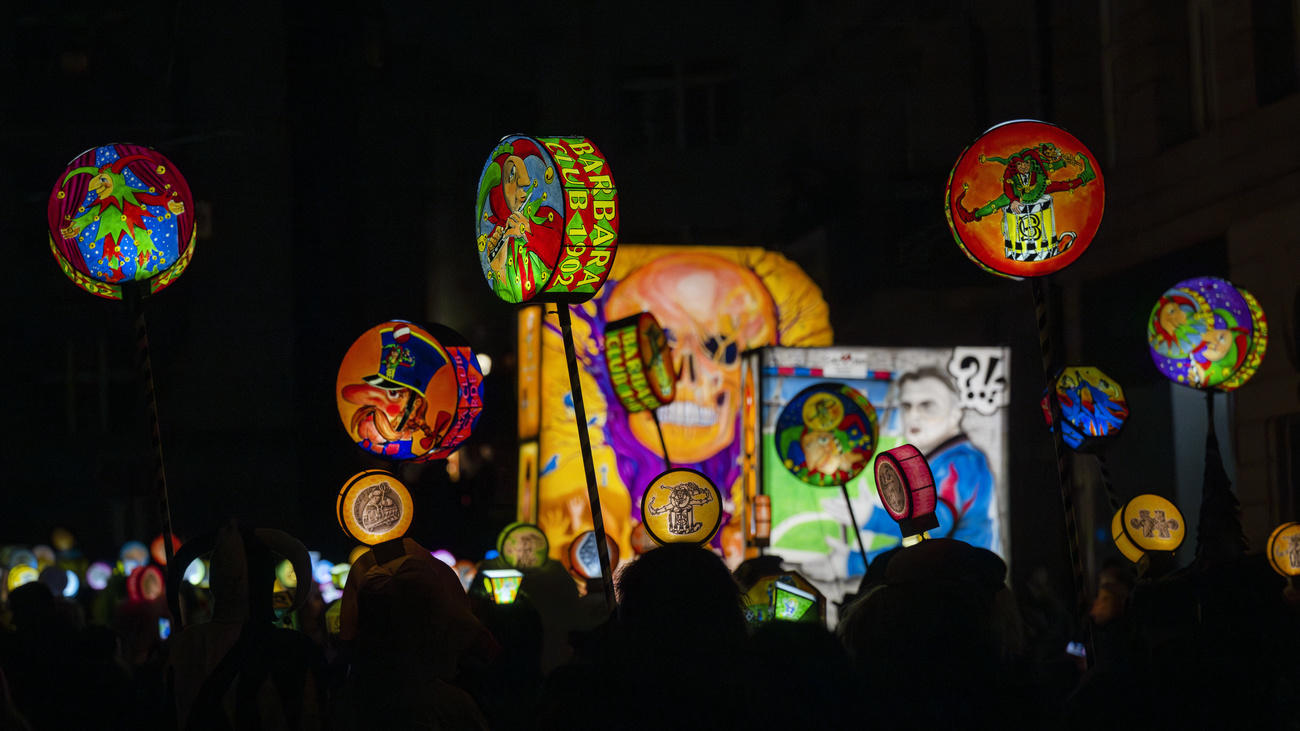
This week, members of the Swiss Club of Strasbourg travelled to Basel for the opening of the city’s annual carnival. A story of getting lost, getting hungry, and almost getting crushed – while never losing the cheery vibes.
Monday morning, 3am, at Basel train station. Normally, at this time, an early riser should only expect to meet a handful of other sleep-deprived night owls; but today, March 10, she meets a full-on human migratory movement.
With each train that arrives, a fresh wave of people is unloaded into the station, all of them joining the stream heading towards the city centre – hundreds of people, all with the same goal.
This morning, Basel’s “Fasnacht”, or carnival, is starting at 4am sharp with the kick-off event known as Morgestraich. The “three most glorious days” of the year are to follow, the local population likes to say. Three days of time-out from normality, of drums and piccolos, of viewing world events through the sarcastic lens of carnival.
For those who find it all too much, the only option is to flee to quieter climes – away from Basel.
At the train station, a group of ten people have gathered at a slight distance from the throng of visitors: “Club Suisse de Strasbourg” – the Swiss Club of Strasbourg – is written on their laminated A4 sheet.
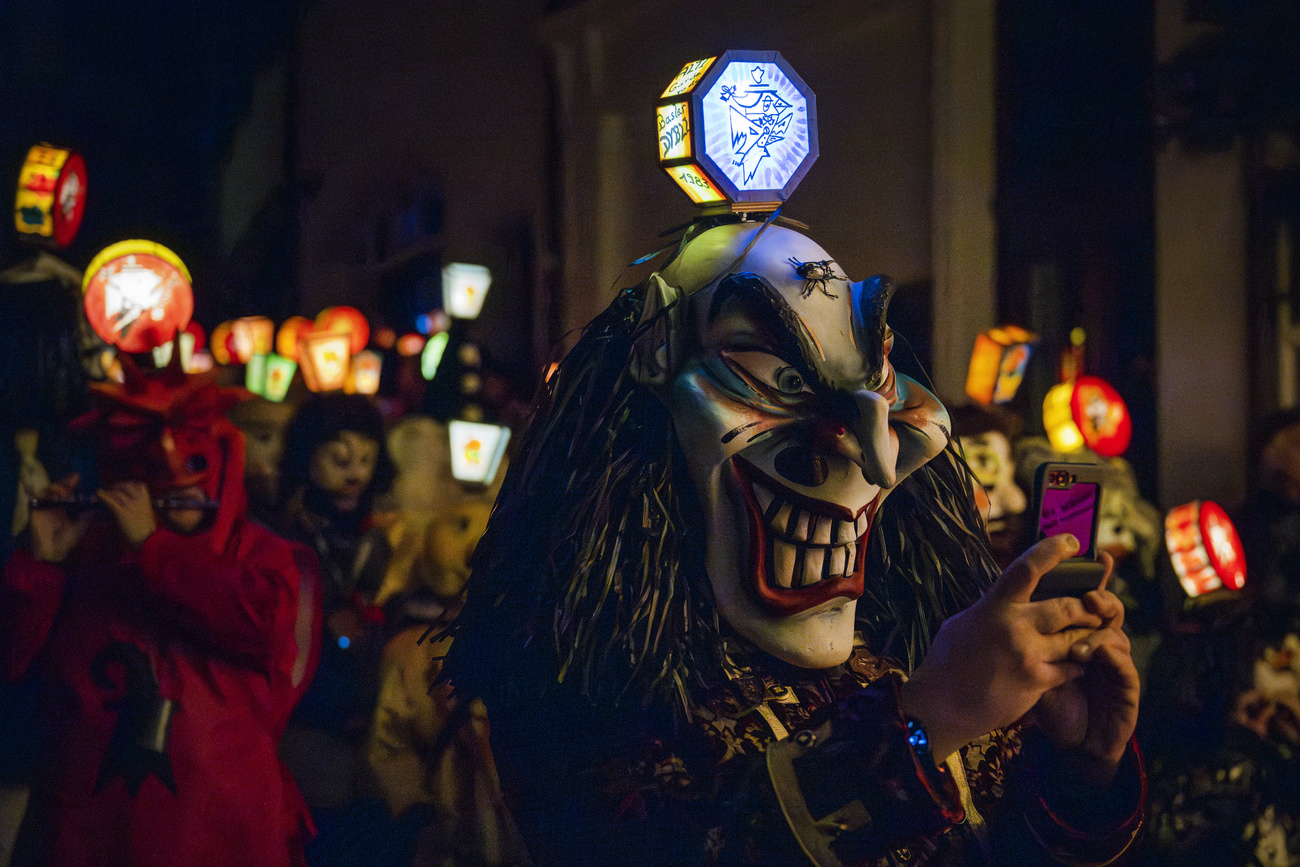
“We caught the train at 1.40am to get here on time,” says Sébastien Oberlé, the club’s president. It’s the second time since 2023 that the group has invited members to attend Switzerland’s biggest carnival, which was listed as a World Heritage Site by UNESCO in 2017. “We couldn’t wait to come to Basel again,” Oberlé says.
‘Be as you want’
Wrapped in an olive-green winter coat, a rucksack over his shoulder, Oberlé’s attire for the day’s outing is only missing one final touch: the Blaggedde!
It’s not hard to find one of these brooch-type pins, which are re-designed every year to match the carnival’s theme. Carnival groups and Blaggedde-selling street vendors have strategically positioned themselves at five places in the station’s main hall so that it’s impossible not to see – and, above all, to hear – them.
The proceeds from sales are used to fund the musical groups who march in the carnival’s parades. Anyone not wearing a brooch runs the risk of punishment – indignant stares, or a shower of confetti.
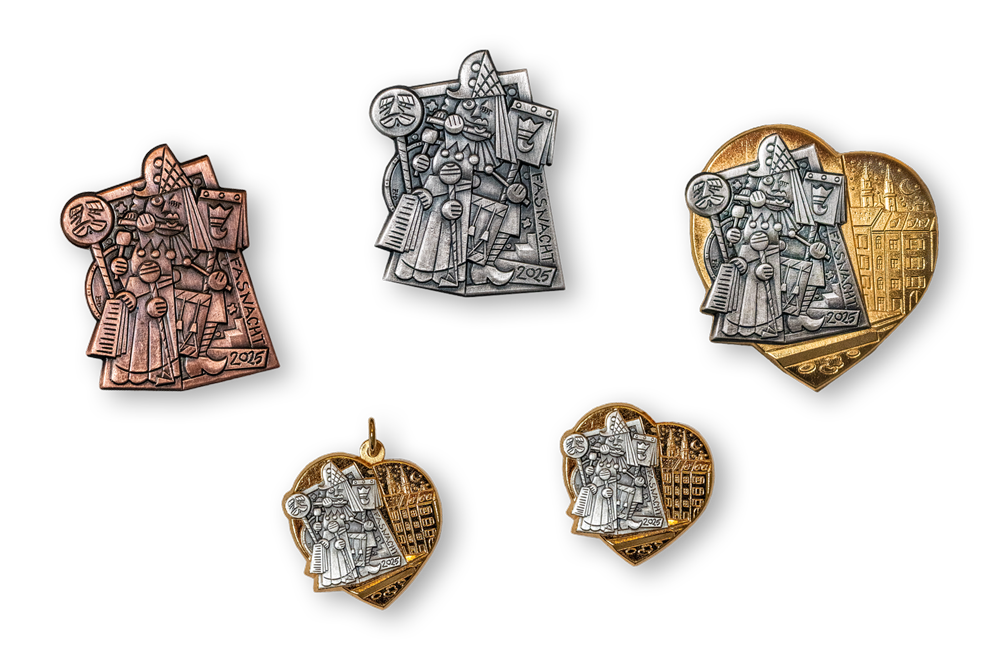
This year’s brooch shows a character combining elements of several different traditional costumes and carnival knick-knacks – true to the motto of this year’s edition, “be as you want”. The slogan “takes up current discussions about people’s right to self-determination and related gender debates”, write the organisers.
Swiss culture at heart
By 3:30am, carnival brooches now adorn one or two of the jackets of the Strasbourg crew. It’s time to join the streams heading towards the city. The closer they get to the centre, the more crowded it becomes. The relatively mild temperatures of 8°C seem to have pulled even more people out of bed than usual.
The Swiss and French people who have travelled here from Strasbourg (“everyone is welcome, whether Swiss or not,” says Oberlé) decide to wait for the Morgestraich at the fountain dedicated to Swiss artist Jean Tinguely, just as they did last time they came.
Among them is Marie-Rose Gaudin-Macabre. She is responsible for communications at the association, and for organising today’s outing – just as she was two years ago.
“These excursions are important for me to maintain a connection with Switzerland,” says Gaudin-Macabre. Thanks to the proximity of Strasbourg and Basel, she can show members that Switzerland is easy to reach – the country is hardly a million miles away.
Oberlé sees things similarly. “We try to maintain regular contact with the culture and life in Switzerland and keep the country close to our hearts,” he says. Association members appreciate the connection too. “A few years ago, we wanted to travel regularly by bus to Swiss cities and visit museums. But unfortunately that became a bit pricey, so we do smaller things now, like the Morgestraich.”
“Small”, that is, in terms of effort and cost. However, to describe the Basel Fasnacht as “small” would probably be more offensive to the locals than turning up without your Blaggedde.
Morgestraich onwards, march!
At 3.59am, thousands of voices suddenly fall silent. Nervous anticipation spreads. It’s time. Mobile phones are pulled out. And when all the lights in the city centre go out, at 4am sharp, and the revellers set off on the first parade, a collective sigh of relief goes through the crowd. Somewhere clapping can be heard, but most people do the same as the group from Strasbourg: simply stand still and let the spectacle carry them away.
With our SWIplus app, you receive a summary of the most important news from Switzerland every day, plus the main news programmes from Swiss public television and personalised monitoring of developments in the canton of your choice. Find out more about the app here.
Officially, some 11,500 people are registered to participate in the carnival this year, but the unofficial figure is probably even higher. One after another, lanterns – some colourful, some gloomy – presenting the themes chosen by the various music groups, pass by the spectators.
The topics on show this year range from world events to local politics. The devil dances a string of puppets with the faces of Vladimir Putin and Kim Jong-un, a skeleton dances with a woman in a red dress. “J’accuse” is written in red letters above a figure covered in white cloth – an allusion to the case of Gisèle Pelicot in France, a symbol of the fight against abuse; Swiss Interior Minister Elisabeth Baume-Schneider is enjoying a bath of gold bars; Nemo dances Switzerland to Eurovision victory.
A selection of the lanterns that lit up the streets of Basel during Morgestraich:
Flour soup
By 5.15am, ten people seem to have become four. The group from Strasbourg has suffered the fate which all groups at big events try – unsuccessfully – to avoid. “On a perdu la moitié” – “we’ve lost half the group”. Time for a pit stop at the Schlüsselzunft restaurant.
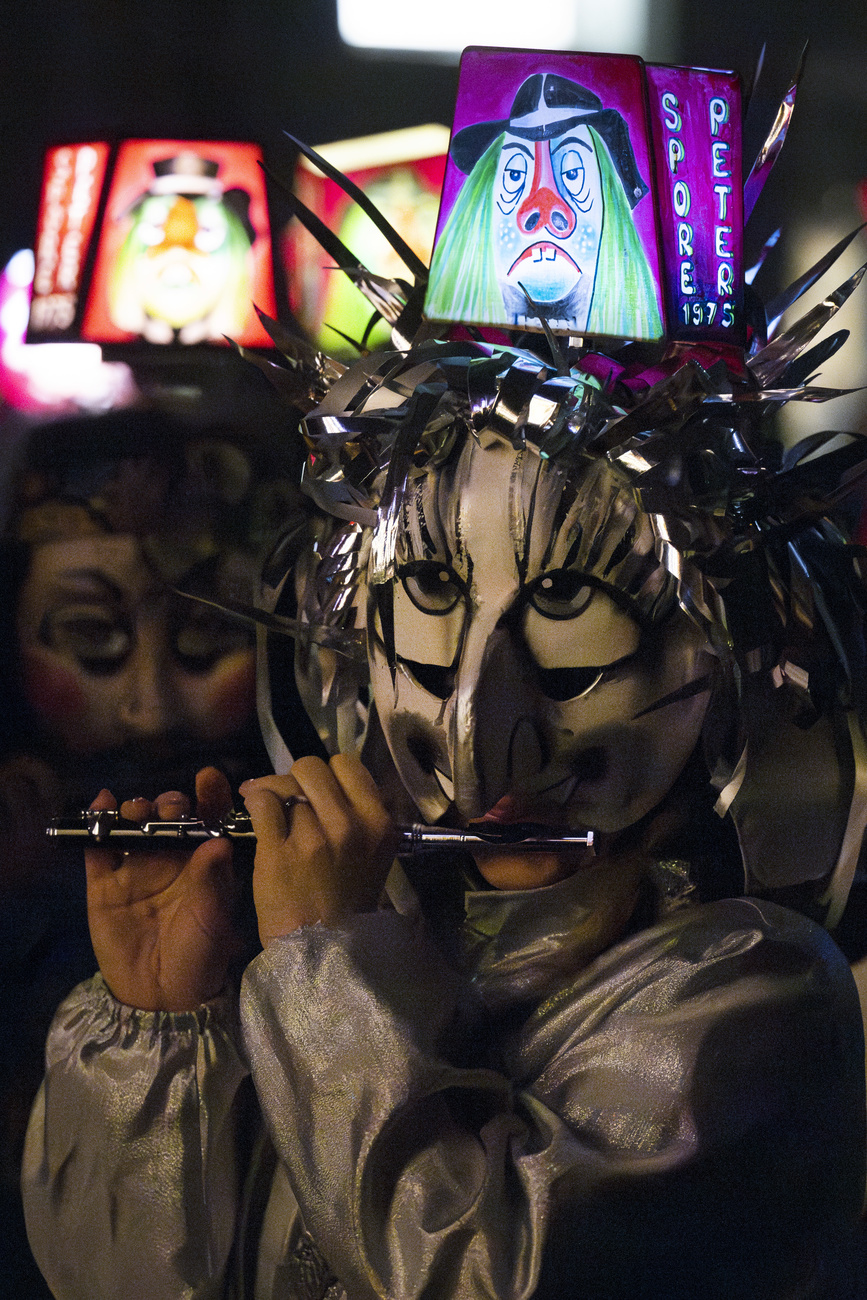
The menu is consulted, terms such as “Schänggeli” (small sweet pastries), “Kääskiechli” (cheese tart) or “Zibelewaie” (onion tart) are savoured. What’s not always understood even by Swiss-German speakers is a real challenge for francophones.
After some back and forth – there is no more goulash, nor sausages – they choose the traditional dish of the Basel carnival: flour soup.
Outside, dawn has arrived. Isolated music groups are parading through the streets, drumming with a vigour as if they wanted to forcibly ensure that the carnival festivities never end.
What will the Strasbourg group remember about this morning? For Oberlé, it’s simply the colourful, chaotic racket of it all.
For Gaudin-Macabre, it’s the moment of anticipation just before. “When all the lights go out and there’s a certain silence, it’s really special. You have the feeling of being in another world, in a cosmos of your own, and you can forget everything.”
However, the group also doesn’t want to forget the second reason why they travelled to Basel: shopping tourism. “That’s another reason we like coming here, we buy traditional Swiss dishes like fondue or rösti,” says Gaudin-Macabre.
The first shops will be opening soon. Nothing should stand in the way of the search for Swiss specialities. Except perhaps the few cyclists now manoeuvring through the crowd, some on their way home, with their masks pushed up on their heads, others on their way to work.
Edited by Balz Rigendinger. Adapted from German by DeepL/dos/ts

In compliance with the JTI standards
More: SWI swissinfo.ch certified by the Journalism Trust Initiative










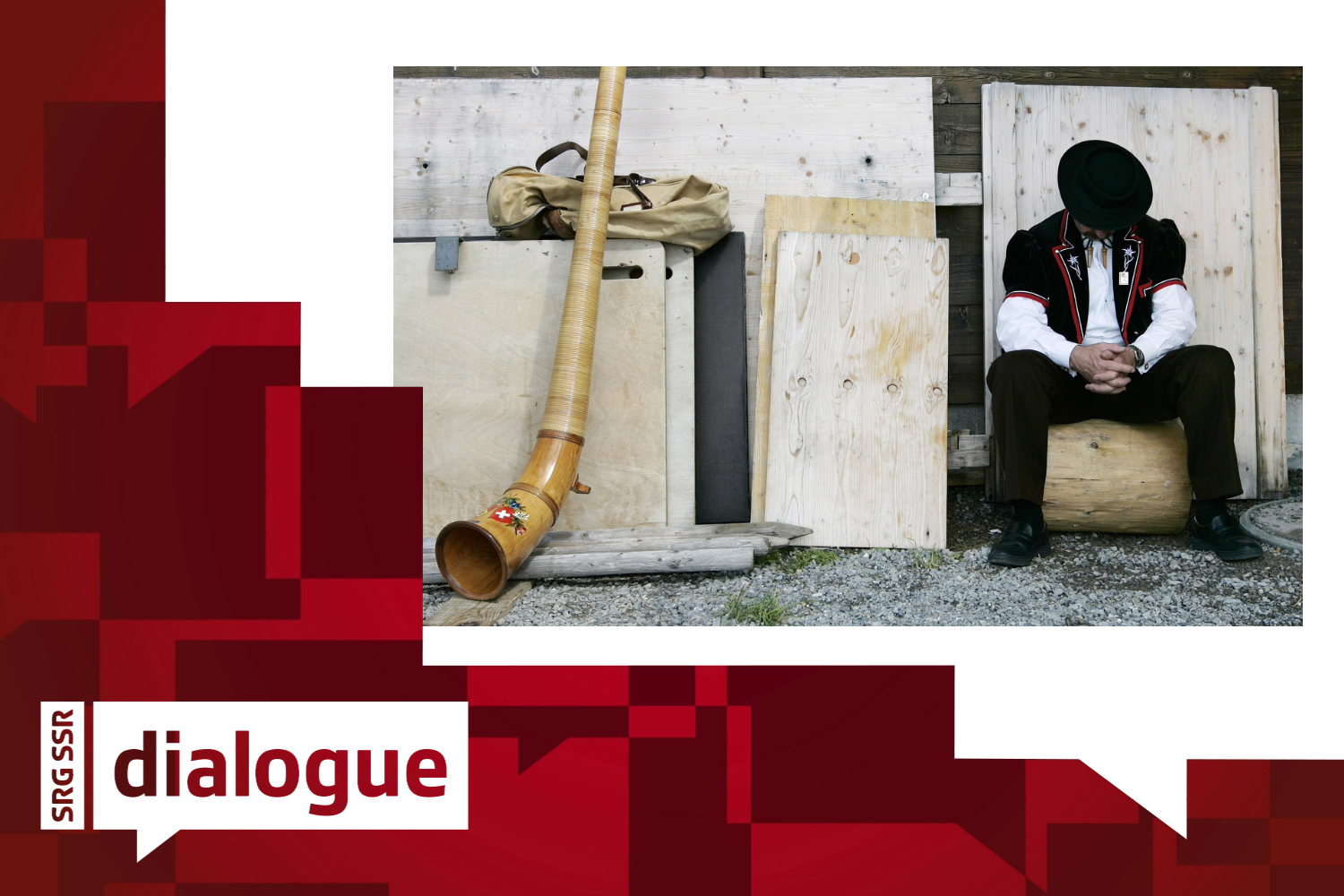
You can find an overview of ongoing debates with our journalists here . Please join us!
If you want to start a conversation about a topic raised in this article or want to report factual errors, email us at english@swissinfo.ch.